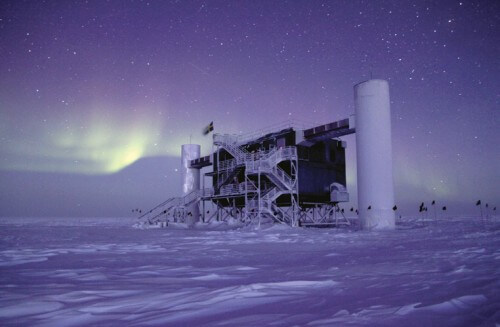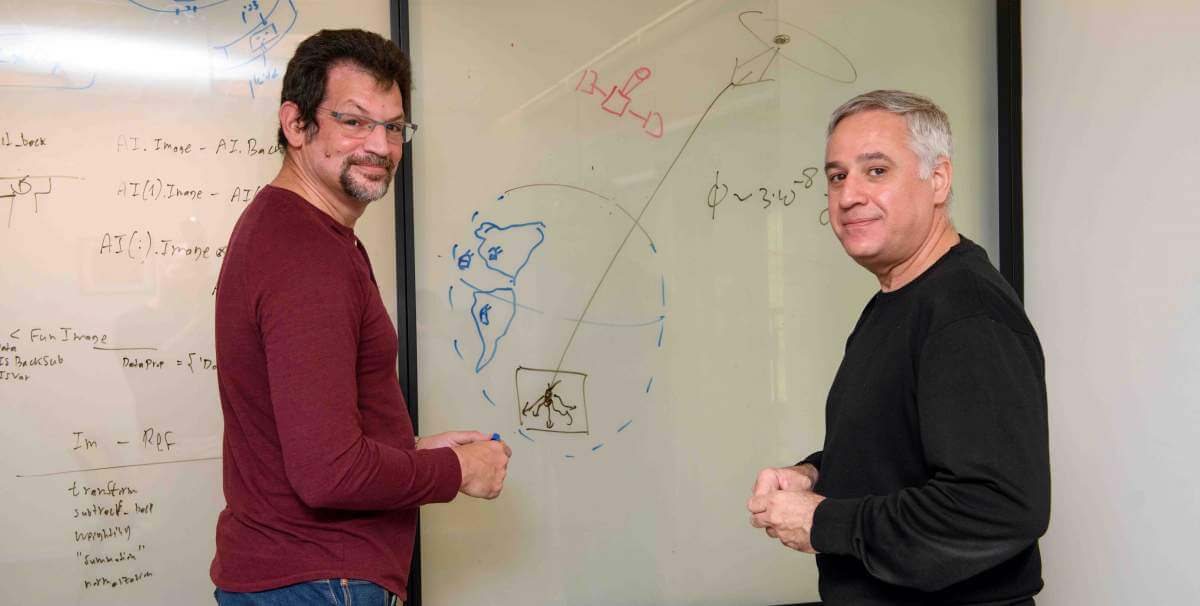Is the origin of a particle that landed at the South Pole in a cosmic event 700 million years old?

Two years ago, a neutrino particle collided with a detector at the South Pole with unprecedented force. Using a wide range of detectors and an array of telescopes in Israel and in space, an international research group succeeded indicate a possible connection Between the rare collision, and an ancient cosmic event that occurred about 700 million years ago - when a distant star was sucked into a black hole - she thus wrote another page in the history book of the universe.
Prof. Avishai Gal-Yam, from the Department of Particle Physics and Astrophysics at the Weizmann Institute of Science, was a member of the group that investigated the origin of the particle, together with scientists from the Research Center DESY that in Germany The research they carried out focused on TDE events (Tidal Disruption Event or "gravitational tearing event" in Hebrew), which occur when stars get too close to the black holes at the center of their galaxy. In this situation, the balance of forces in the star is violated, and as a result, the star stretches like a toffee - until it is completely torn. Events of this type were observed for the first time about a decade ago, and Prof. Gal-Yam - in collaboration with his former research student, Dr. Yair Hakabi - were among the first to investigate them. Prof. Gal-Yam and the German scientists searched the sky for evidence of cosmic explosions, including such a gravitational tearing event.
The event in question was observed for the first time by a facility Zwicky Mount Palomar, California, in April 2019. This facility consists of an array of computerized telescopes, capable of detecting new light sources in the night sky - indicative of supernovae, gravitational rip events, and other cosmic occurrences. The software that operates the facility is based on an algorithm developed by Dr. Barak Zakai andProf. Eran Ofek from the institute, together with Prof. Gal-Yam. In gravitational tearing events, the source of the radiation that appears in the sky is gaseous material - the remnants of the torn star - that swirls around the black hole, and heats up, before being sucked into it. When an unusual event is observed at the Zwicki facility, the telescopes and detectors at the facility focus on that piece of sky, trying to decipher what the observed event is and collect as many details as possible.
About six months later, in October, a neutrino particle was observed inIce Cube – An array of detectors buried under the ice at the South Pole. The discovery of a neutrino particle is a rare event: although trillions of them pass the Earth every day, most of them leave no trace at all. Accordingly, the IceCube detectors report a handful of neutrino particles each year.
This particular neutrino particle hit the detector with a whopping 100 tera electron volts - which told scientists that the particle must have come from an unusual source. Indeed, they discovered that it originated from the same piece of sky where the gravitational rip event was detected in April. The research group identified the connection between the two events and proposed that the particle's high intensity was created when the material it ejected swirled around the black hole, as if it were a giant particle accelerator, causing it to be thrown directly in our direction.
The research group at the DESY Center, led by Prof. Anna Frankowiak, developed special tools that combined the data obtained from the Zwicky facility, from IceCube, from a variety of optical telescopes (including one located on NASA's Swift satellite) and a radio telescope - which showed that even after the disappearance of the light radiation Seen from that gravitational rip event, other radiation levels continued to rise. The theoretical analysis showed that the neutrino particle could have been created and ejected in the later stages of the event.

"It was an exciting demonstration of the power inherent in the combination of different measurement methods and cooperation between diverse research groups," says Prof. Gal-Yam. The scientists believe that many discoveries may emerge as a result of the methods developed during the research. These can help scientists understand how the huge "particle accelerator" that brought us that neutrino particle was created, and how high-energy neutrino particles are produced. The institute's scientists are even expected to contribute to this effort in person ULTRASAT, a new satellite currently being developed under the leadership of Prof. Eli Waxman, in collaboration with scientists from DESY. After the satellite's launch in 2024, its telescopes will look for unusual phenomena in the ultraviolet range. The scientists hope that the satellite will be able to detect signals, which are currently undetectable, from some of the most exciting events in the history of the universe - from gravitational tearing events to supernovae and gravitational waves emitted by neutron stars.
More of the topic in Hayadan:
- Curtains of heavenly radiance
- A small blow to a large planet
- Weizmann Institute of Science scientists observed for the first time the supernova of a giant star
- Israeli research: the moon was formed as a result of several collisions with celestial bodies, not as a result of a single collision
- White dwarfs, heavy elements
